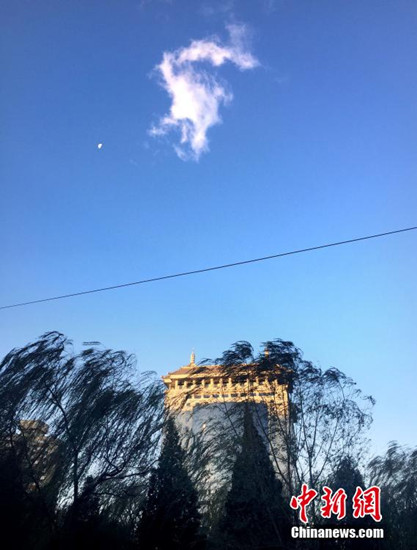
Overnight wind drove the severe smog that had lasted five days out of Beijing, but the impact of the pollution has triggered discussion.
A northwestern wind arrived in Beijing on Tuesday night, leading to the lifting of the orange smog alert at 10:45pm.
Air quality is expected to remain good from until Friday, said Zhang Dawei, director of the Beijing Municipal Environmental Monitoring Center.
Between Nov 27 and Dec 1, the air quality index in many monitoring stations in Beijing soared to 500 as the smog concentration escalated.
To reduce emissions, Beijing authorities ordered that production at more than 2,100 companies be restricted and all work on construction sites that could generate dust be suspended. Inspection teams were sent to polluted factories and construction sites by the Environmental Ministry on Nov 27 and 30 to track down violators.
People's daily lives were affected. Beijing schools canceled outdoor classes and activities and some were closed to protect students from the toxic smog.
Beijing's connections with other regions were partially shut down for hours on Tuesday. Expressways were sealed off and flights were delayed as the thick smog reduced visibility to several hundred meters.
From 10am on Sunday to 10:45pm on Tuesday , the orange smog alert, the first in Beijing this year, has lasted for more than 60 hours. The concentration of PM2.5-particulate matter with a diameter less than 2.5 microns that poses health risks-reached 945 at its peak in a southern Beijing monitoring station on Monday.
Many questions were raised as the capital recovered after being hit by the severe smog.
Why did local authorities not issue a red alert for smog?
It did not meet the requirement for issuing a red alert, Xinhua cited Wang Bin, director of Emergency Response Department of Beijing Municipal Environmental Protection Bureau, as saying.
According to the Beijing Municipal Severe Air Pollution Emergency Plan which took effect in March, the municipal government can issue the red alert when severe air pollution is forecast to extend for more than three days, the orange alert for three days, the yellow alert for two days and the blue alert for one day.
On Nov 27, the Beijing Municipal Environmental Monitoring Center forecast that air quality would improve on Nov 29 and issued a yellow alert. That day eventually turned out to be a heavy smog day.
A new forecast was made on Nov 29 which indicated severe smog would continue for the next two days and improve on Dec 2. The alert was then updated to orange.
Where do pollutants come from?
Coal use and industrial emissions are the two main pollutants, while vehicle emissions worsen the situation, according to Chinese Research Academy of Environmental Sciences.
There is a positive link between the increase of pollutants generated by coal use and the worsening of air pollution, said the Beijing Municipal Environmental Protection Bureau.
It also said unfavorable weather, with no wind and high humidity, contributed to the formation of smog.
Where will the wind blow the smog to?
When a cold front approaches, the wind will lift PM2.5 higher in the atmosphere, according to a report from weather.com.cn, a website related to the China Meteorological Administration.
If wind blows horizontally, it may also take PM2.5 from the polluted area to other regions.




















































